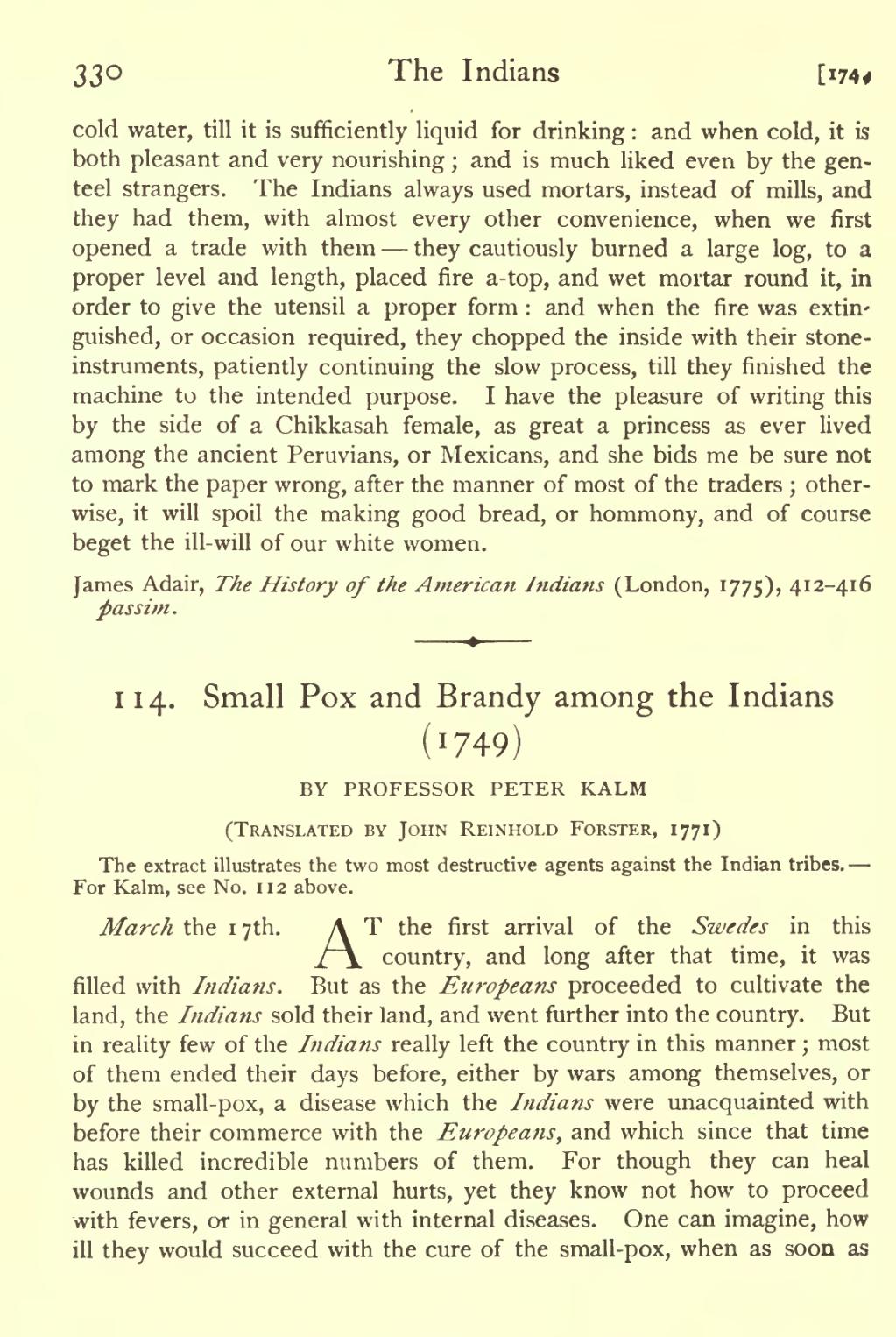cold water, till it is sufficiently liquid for drinking : and when cold, it is both pleasant and very nourishing ; and is much liked even by the genteel strangers. The Indians always used mortars, instead of mills, and they had them, with almost every other convenience, when we first opened a trade with them — they cautiously burned a large log, to a proper level and length, placed fire a-top, and wet mortar round it, in order to give the utensil a proper form : and when the fire was extinguished, or occasion required, they chopped the inside with their stone-instruments, patiently continuing the slow process, till they finished the machine to the intended purpose. I have the pleasure of writing this by the side of a Chikkasah female, as great a princess as ever lived among the ancient Peruvians, or Mexicans, and she bids me be sure not to mark the paper wrong, after the manner of most of the traders ; otherwise, it will spoil the making good bread, or hommony, and of course beget the ill-will of our white women.
James Adair, The History of the American Indians (London, 1775), 412-416 passim.
114. Small Pox and Brandy among the Indians (1749)
BY PROFESSOR PETER KALM
The extract illustrates the two most destructive agents against the Indian tribes. — For Kalm, see No. 112 above.
March the 17th.
AT the first arrival of the Swedes in this country, and long after that time, it was filled with Indians. But as the Europeans proceeded to cultivate the land, the Indians sold their land, and went further into the country. But in reality few of the Indians really left the country in this manner ; most of them ended their days before, either by wars among themselves, or by the small-pox, a disease which the Indians were unacquainted with before their commerce with the Europeans, and which since that time has killed incredible numbers of them. For though they can heal wounds and other external hurts, yet they know not how to proceed with fevers, or in general with internal diseases. One can imagine, how ill they would succeed with the cure of the small-pox, when as soon as
